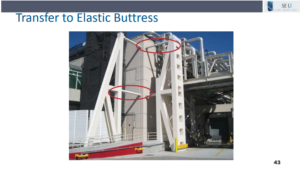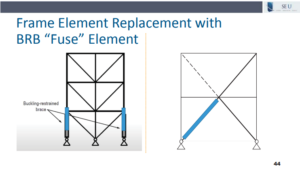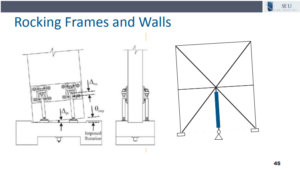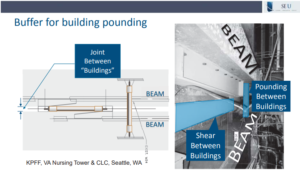Ideas for Using Buckling Restrained Braces in Retrofits
Seismically inadequate buildings are often demolished without due consideration for unique retrofit solutions which may provide the necessary strength and ductility to the existing structure. Buckling restrained braces are one solution which can be used in buildings with weak lateral systems, seismic irregularities, or load path discontinuities, and there are many creative ways to incorporate these braces to add strength and ductility to the existing lateral system.
In the August 2023 SEU session, Kimberley Robinson, SE, PE, from EVER Seismic, presented It’s Better to Bend than Break: Retrofitting with Buckling Restrained Braces and Steel. Kim identified frequent problems with seismically inadequate buildings and explained how Buckling Restrained Braced Frames are used to address inadequacies in buildings.She also covered some of the requirements for retrofits that are included in ASCE 7-22 and ASCE 41-17.
Kim offered some unique solutions to retrofitting buildings with buckling restrained braces, especially for buildings which are very complicated, congested, or cannot be out of use for long periods of time for construction. One example could be working from the exterior of the building by removing the facade to install new BRBs within the existing wall so that there is minimal disruption to the facility.
Another option might be to install BRBs on the exterior of the building which are attached to new elastic buttress frames. This is especially useful for buildings that are congested with existing equipment and piping. These new steel buttress frames are designed to be stronger than the BRBs to limit the seismic drift of the existing building.
For buildings with existing braced frames, elements of the existing frame can be replaced with BRB “fuse” elements which protect the other existing frame elements which remain elastic. Some existing connections may need to be modified to accommodate the additional demand on the frame, but this option results in minimal change within the building layout.
BRBs can also be installed with a rocking frame or wall within the building. The wall or frame remains elastic, while the BRBs take the inelastic demand to strengthen the seismic lateral system.
Kim also provided a solution for two buildings which were anticipated to pound during a seismic event. With BRBs installed across the joint of the two buildings, and an additional BRB running laterally along the joint to combat the shear between the buildings, the anticipated movement between the buildings is reduced.
Many creative solutions exist, but some require a “thinking outside the box” mentality to incorporate in congested or complex structures. These examples are just a few of the possibilities for using buckling restrained braces to retrofit existing structures which do not meet the requirements of current seismic building standards.







There are no comments yet, but you can be the first